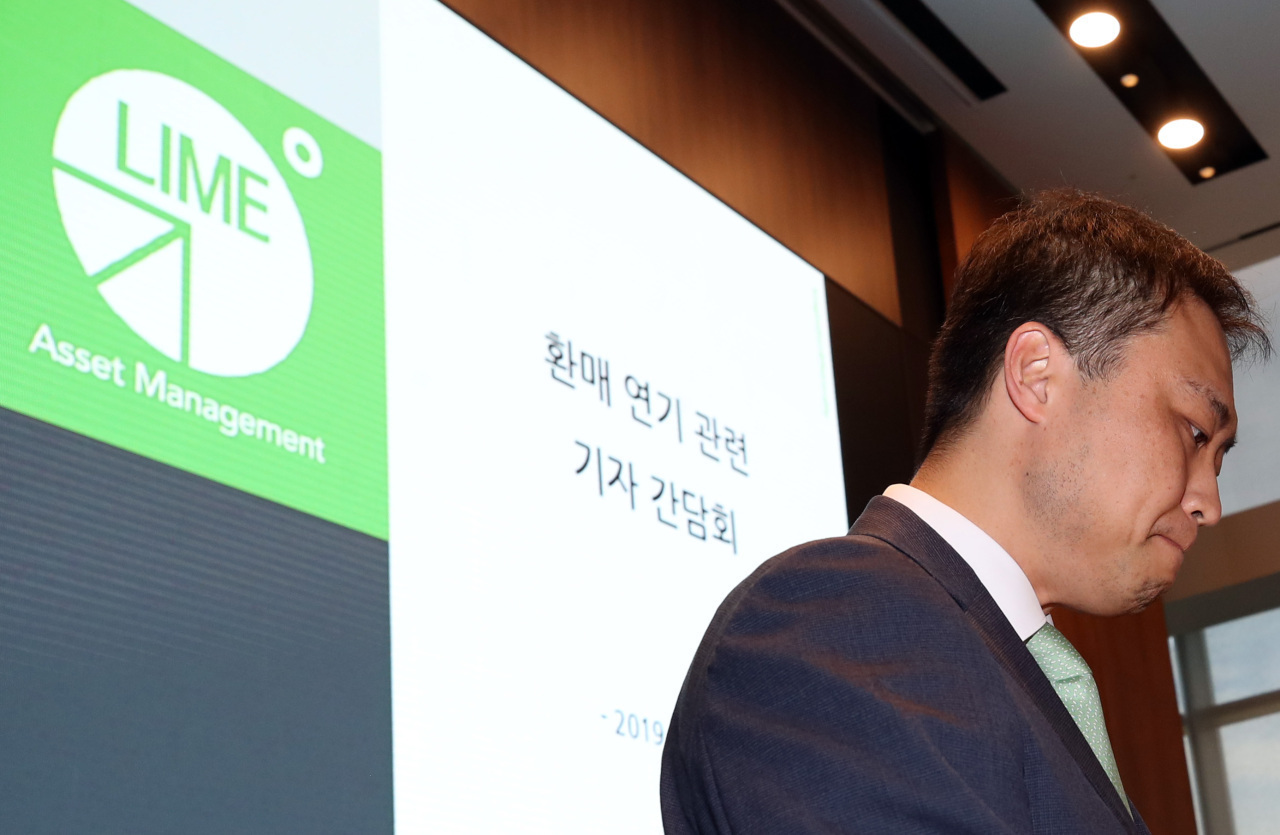The entire amount of financial losses stemming from Lime’s funds is expected to rise to more than $1 billion, sparking deep distrust in private fund operatives and concerns over a lack of protective measures for individual investors.
Lawsuits for damages and compensation are likely to follow en masse, after an intermediary audit on the hedge fund firm last week by the financial watchdog specified the case as alleged fraud.
On Friday, the Financial Supervisory Service said Lime and its seller Shinhan Investment deceived investors by concealing their losses and continuing the sale of related products.
Announcing the result of the inspection by auditor Samil PricewaterhouseCoopers, the fund management firm said Friday that its two funds, Pluto FI D-1 and Tethys 2, saw their respective net asset value drop 49 percent and 30 percent to 460.6 billion won and 165.5 billion won compared to end-September.
Losses are likely to go beyond the $1 billion mark, as smaller funds linked to the parent funds Pluto and Tethys are forecast to become insolvent consequently. The initial combined net asset value of the 29 smaller funds used to be worth 436.4 billion won.
Attention is turning to the exact amount of damage that would be inflicted on individual investors.
Lime’s primary partners Shinhan and Woori are entitled to recoup Lime’s funds first, and then individual investors. According to the FSS, of the 1.66 trillion won of Lime funds suspended for sale, 60 percent, or 994 billion won, came from individual investors. In a simple calculation, if Lime fund losses mount to 1 trillion won, individual investors are likely to lose around 600 billion won, according to market observers and reports.
As inspections are underway to gauge the entire losses of Lime’s other parent funds, including Pluto TF-1 and Credit Insured 1, the exact financial damage could be much more serious down the road, the FSS added.
“Pluto TF-1, which had received $300 million from institutional investors via total return swap contracts and $200 million from individuals, could cause individuals to lose all of their investments when losses from its related funds exceed $200 million,” an official from the FSS said.
TRS is a lending scheme that allows hedge fund companies, like Lime, to utilize a large leverage when purchasing assets, including bonds, equities, commodities and mortgage-backed securities. Institutional investors -- stock brokerage firms Shinhan Investment and Woori Bank in the Lime case -- are ahead of individuals in priority to be repaid in case of fund insolvency.
The TRS scheme allowed Lime to lend and invest more than it could on its own.
Through a TRS contract with Shinhan, Lime invested in five different trade finance funds, two of which were operated by US investment adviser International Investment Group. The IIG lost its license in November on charges of selling fake loan assets to clients, which sequentially triggered the liquidity crisis of the Korean fund operator.
Lime and Shinhan are suspected of having doctored price records of IIG’s funds even though the two Korean firms had been allegedly aware of the fraud.
“Lime Asset Management and Shinhan Investment are accused of concealing the losses in their trade finance funds, making (investors) believe that operations were under control,” the FSS said.
The FSS, however, is also under fire for failing to oversee the risky hedge funds in a stricter manner and to protect individual investors.
“The financial authorities unprofessionally lack knowledge and experience in the financial market,” Cho Nam-hee, chairperson of the Financial Consumer Agency, a consumer rights group, was quoted as saying by Yonhap News Agency.
By Kim Young-won (
wone0102@heraldcorp.com)








